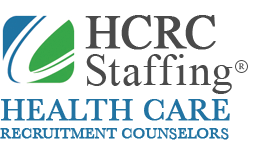Blogs
Trimming the Fat: Private Practice on a Budget
We talk a lot here about adding depth to your medical practice. This depth is achieved often through newly acquired computers, software, equipment, and highly specialized staff. It is achieved through implementing HR and training strategies to make sure your employees are resourceful, cross-trained multitaskers. Today, we will go in a bit of a different direction. Today is all about taking away.
We know what you might be thinking. “Haven’t you been suggesting major investments in digital technology and personnel all this time? In hiring coders, and PAs, and using online patient portals?” The short answer is yes, and we still do suggest these things. The long answer is that every piece of advice, every new strategy is meant to improve your practice’s efficiency, and its revenue. But less, as we have been told countless times in our lives, is usually more.
Now, don’t go canceling any of your interviews, or scrapping your EHR upgrades. More than anything, we implore physicians and office managers to take a very active, close look at their daily processes and ask themselves two questions: Is what we are doing effective? Moreover, is it sustainable? Below are a few things to examine, to change, or to give the axe.
Office equipment
To buy, or not to buy? To buy new, or used? These are questions that, ultimately, you must answer based on your yearly budget. This number is one only you can know, and which you should measure against your previous track record, as well as overall industry standards. That said, there are advantages to both scenarios.
To be clear, we do not suggest operating woefully out of date technology, and equipment. The resulting confusion, frustration, and time wasted can and will cost your practice money. What we do suggest is shopping around for the best deal. With so much information available, this can be either very easy, or very hard. But there are reputable companies out there that offer refurbished, or lightly used modern equipment for a heavily reduced price, and with solid warranties attached. You want to build a lasting business relationship with suppliers like these.
Think about the needs of your practice. Think about the space you have. Instead of a bulky printer sharing space with a similarly bulky fax, why not invest in a multi-faceted machine? Maybe you don’t want to buy a more expensive machine, no matter how many tricks it performs. Well, think about this: the cheaper equipment will end up costing you more per page to print, and the money you spend on replenishing things like ink and toner will quickly surpass the cost of the more expensive machine. No-brainer.
Trying to come up with the money for even a down payment on a large piece of equipment isn’t always feasible. Luckily, buying isn’t your only option. While owning something outright seems more desirable (it is yours, after all), you may benefit from leasing. There isn’t much cash involved upfront, which is a good thing if you need to invest extra capital in improving other areas of your practice.
The decision to lease or to buy rests on only a few simple factors. The first is whether the equipment in question is built to last, and whether or not its technology will become obsolete in a short amount of time. The rest is like dealing with a car. Add up the monthly payments over the lease term, and compare them the actual purchase price. Think also about repair and maintenance costs. These will come out of your practice’s cash flow when you decide to buy.
Revisiting staffing needs
We mentioned watching staff performance closely in a previous post. Identifying underperformers, and working with them to get the extra resources and skills they need will undoubtedly help your revenue in the long run. Beefing up administrative support can help things run more smoothly on a day to day basis. This may mean reevaluating, and adding to the job’s functions prior to your next hiring cycle.
But maybe you don’t have room on your payroll for a singular admin-whiz. It might be better to utilize multiple part-time staff instead. Once again, this is dependent on the specific needs of your practice. In the interest of saving money, this method can be applied to multiple positions throughout your office. Always remember, though, that opting for part-time staff is not a viable option if doing so sacrifices accountability, and productivity.
A similar logic can be applied to billing and coding. Keeping up with collections is difficult for many practices. This is not news. The pressure to upgrade technology and train staff to use it can also cause further difficulties. If your practice currently has the right staff in place using the right programs, or will very soon, then there is no need to make any changes. For others not as up to date with EHRs standards, outsourcing billing could reduce the cost of collections and increase revenue.
If the latter describes your practice’s current situation, third-party billing companies can help you streamline collections, and keep up to date with changes in EHR and practice management systems. Both are essential for meeting quality standards and obtaining insurer-based incentives.
Lease or buy? New, or used? Part-time, or full-time? In-house, or out? The onus is on you as the head of your practice to figure these things out. Become comfortable with reading data, and matching it against your best, and your worst years. To reiterate: cutting costs can ultimately end up costing you more. Decisions should be made based on practicality, efficiency, and productivity.
Brian Torchin
| HCRC Staffing | Brian@hcrcstaffing.com | www.hcrcstaffing.com
– See more at: http://3.228.224.47/blog/#sthash.regjTzUx.dpuf

